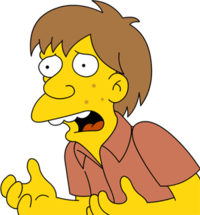
Directed by Orson Welles.
Starring Charlton Heston and Janet Leigh.
Starring Charlton Heston and Janet Leigh.
In a Nutshell: A corrupt sheriff and upright narcotics officer clash over a murder case.
Given a final bid at an American audience, Orson Welles pulled out all the stops for his B-movie cop-thriller noir. Panned then, acclaimed now, it offers the goods with such immense conviction that it rejects an involvement beyond admiration. It is a film that broaches themes as varied as drug enforcement, racial tension and corruption without using them for more than framework for its plot. And yet it hardly needs thematic discourse, not with such energetic filmmaking prowess on display. The plot itself is overshadowed by the ideological showdown between two investigators of a recent murder; self-righteous narcotics official Miguel Vargas (Charlton Heston) and crooked “police celebrity” Hank Quinlan (Welles). While Vargas officiates a by-the-book approach, Quinlan is suspected of planting false evidence to incriminate the most likely suspect (who may be a target of Quinlan’s racism). Vargas suspects this as all too commonplace for Quinlan’s investigations while Quinlan is choked with bitterness, believing that his past police work let his wife’s killer go free.
Given a final bid at an American audience, Orson Welles pulled out all the stops for his B-movie cop-thriller noir. Panned then, acclaimed now, it offers the goods with such immense conviction that it rejects an involvement beyond admiration. It is a film that broaches themes as varied as drug enforcement, racial tension and corruption without using them for more than framework for its plot. And yet it hardly needs thematic discourse, not with such energetic filmmaking prowess on display. The plot itself is overshadowed by the ideological showdown between two investigators of a recent murder; self-righteous narcotics official Miguel Vargas (Charlton Heston) and crooked “police celebrity” Hank Quinlan (Welles). While Vargas officiates a by-the-book approach, Quinlan is suspected of planting false evidence to incriminate the most likely suspect (who may be a target of Quinlan’s racism). Vargas suspects this as all too commonplace for Quinlan’s investigations while Quinlan is choked with bitterness, believing that his past police work let his wife’s killer go free.
Drowning in fatsuit padding, Welles makes for a memorable tyrant. His pathos is cohesive, but never in the foreground as the film calls for comeuppance without enlightenment. Again, the audience gets a plot detail rather than anything “meaningful.” But again, it hardly detracts. In fact, Touch of Evil teems with so much detail that it illuminates its own stark luridness and amoral complexity, maybe even for film noir as a whole. That famous opening shot oversees the hustle and bustle of the bordertown, zeroing in on Vargas and his bride, Susan (Janet Leigh). Their newlywed bliss is centered in a shot beginning with a bomb being wound and ending with its detonation in a car’s trunk. It is a flicker of pleasure that becomes trapped within our witness to the main crime. By the end, Susan will be brutalized by the film’s characters and marginalized by its story.
Taken as mere execution over concept, Touch of Evil exemplifies the sort of tonal and visual panache that can make film such an intoxicating medium (pardon my hyperbole). It is a film built on strokes of filmmaking, from Welles sweeping camera movements and jagged cutting to colorful bursts of acting from the stock players. Henry Mancini saturates the screen with a jazzy soundtrack that veers from sinister to vulgar to explosive rage. It is no wonder it became a staple influence of the French New Wave’s experimentation. Touch of Evil is nothing but craft, a dark, indelible testament to the surface medium.

No comments:
Post a Comment